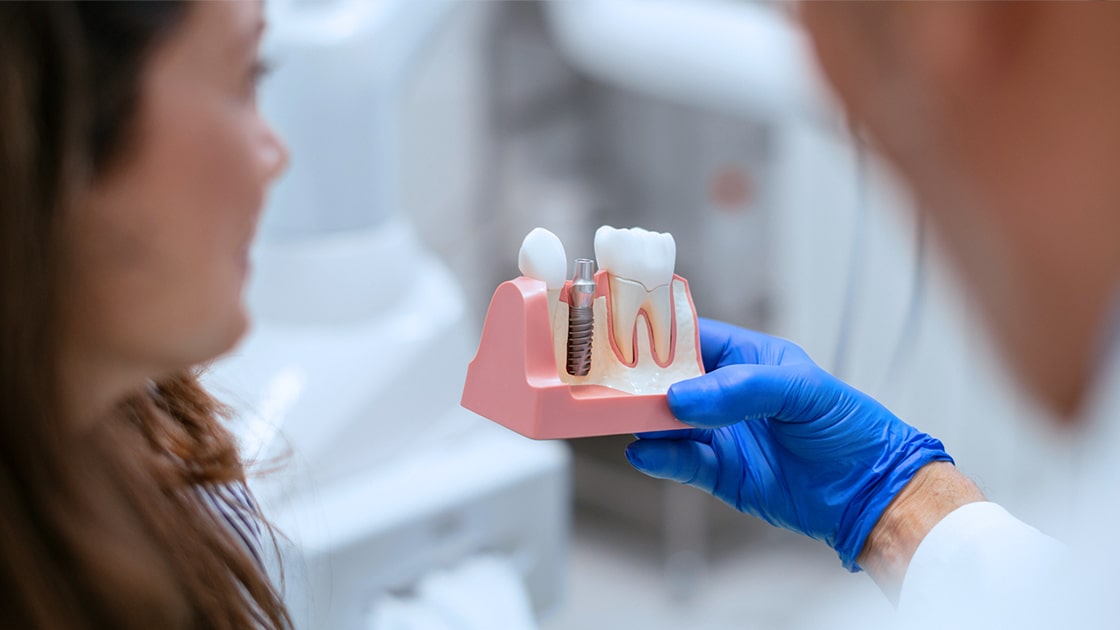
Three Rivers Dental provides dental implants in Longview, WA. Call 360-803-8003 to learn more and schedule an appointment.
What Are Dental Implants?
Dental implants are a replacement option for missing or damaged teeth. A dental implant is an artificial tooth root that is surgically placed in the jaw. It fuses with the bone to provide solid support for a dental crown. A single dental implant can replace one missing tooth with a naturally looking, fully functional replacement. Multiple dental implants can be placed throughout the jaw to provide support for bridges or dentures.
Benefits of Dental Implants
Dental implants are considered to be the highest quality tooth replacement option available due to their many benefits:
- Natural function. Once the implant has fully fused with the jaw bone, it offers equivalent bite and chewing strength to that of a natural tooth.
- Natural appearance. A dental implant looks very natural because it is secured in the jaw like a natural tooth. The porcelain crown resembles tooth enamel and can be made to match the existing teeth in size, shape, and color.
- Can last a lifetime. Dental implants stay in place for life in most cases. The bond that is created between the titanium implant and the bone in your jaw is strong and can often be permanent. Some factors in patient health (such as smoking, diabetes, and periodontal disease) can reduce the success rate and lifespan of a dental implant.
- Preserves jaw bone structure. Dental implants keep the jaw bone strong where it would otherwise weaken and deteriorate in the absence of a tooth.
- Won’t affect your healthy teeth. Unlike a dental bridge that uses your other healthy teeth for support, a dental implant won’t have any affect on your existing teeth, allowing you to avoid potential damage.
Types of Dental Implants
There are a few different types of dental implants:
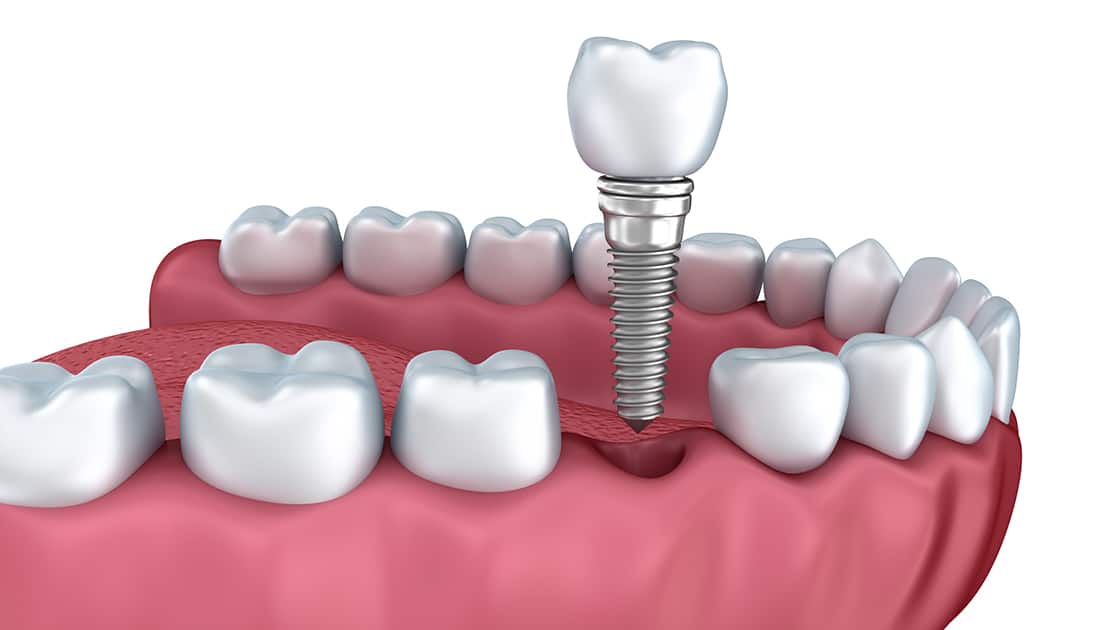
Single Dental Implant
When one tooth needs to be replaced, a single dental implant can be placed in the socket where the tooth is missing. An artificial tooth is attached to the implant that looks and functions like a natural tooth.
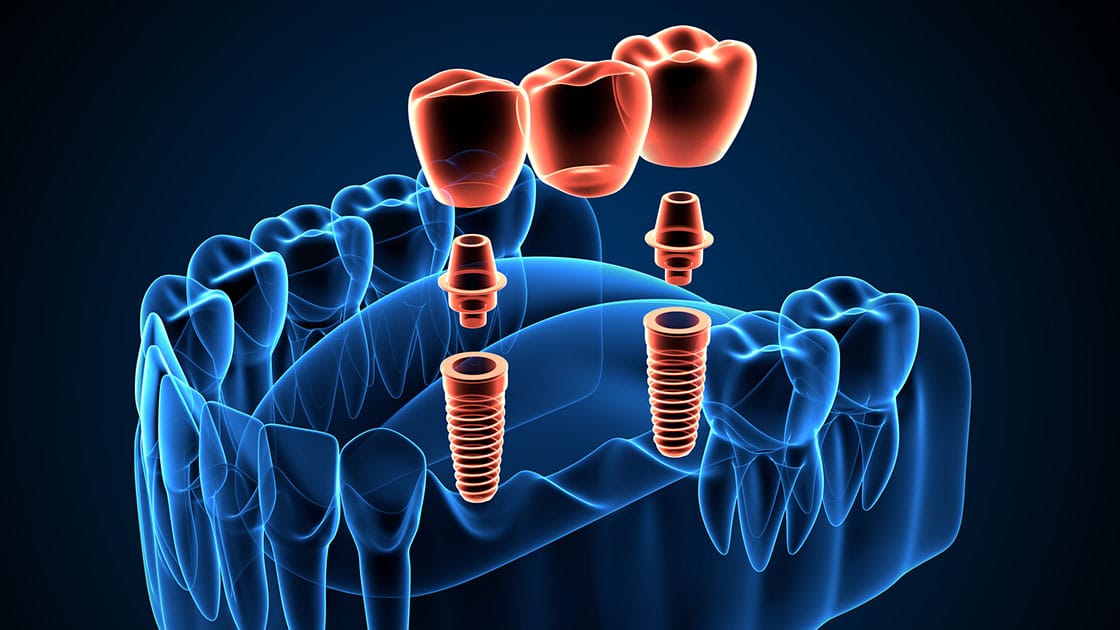
Implant Supported Bridges
A row of missing teeth can be replaced with an implant supported bridge. Two dental implants are placed on either side of the gap with one or more artificial teeth (pontics) suspended between them.
What are the advantages of an implant supported bridge?
Because of the natural look and feel and the functional stability provided by the implants, implant supported bridges are an effective solution to replace multiple missing teeth.
A traditional bridge uses teeth on either side of the missing tooth space for support, and preparing teeth for crowns can weaken them. Because these teeth serve as attachments, they are subject to additional forces that can damage both healthy and compromised teeth or bone tissues.
A dental implant supported bridge replaces missing teeth by placing two or more dental implants rather than adjacent teeth. These implants avoid putting any additional stress on your natural teeth and help preserve the health and function of the surrounding bone tissue and teeth.
Fully Edentulous (Toothless) Solutions
For patients missing many or all of their teeth, implant retained or implant supported dentures may be an alternative to traditional dentures. These solutions can simulate the look and feel of natural teeth and stay fixed in place with the implants acting as anchors. Using implants for retention or the support of dentures allows for a smaller and more comfortable base and less shifting of the prosthesis during use.
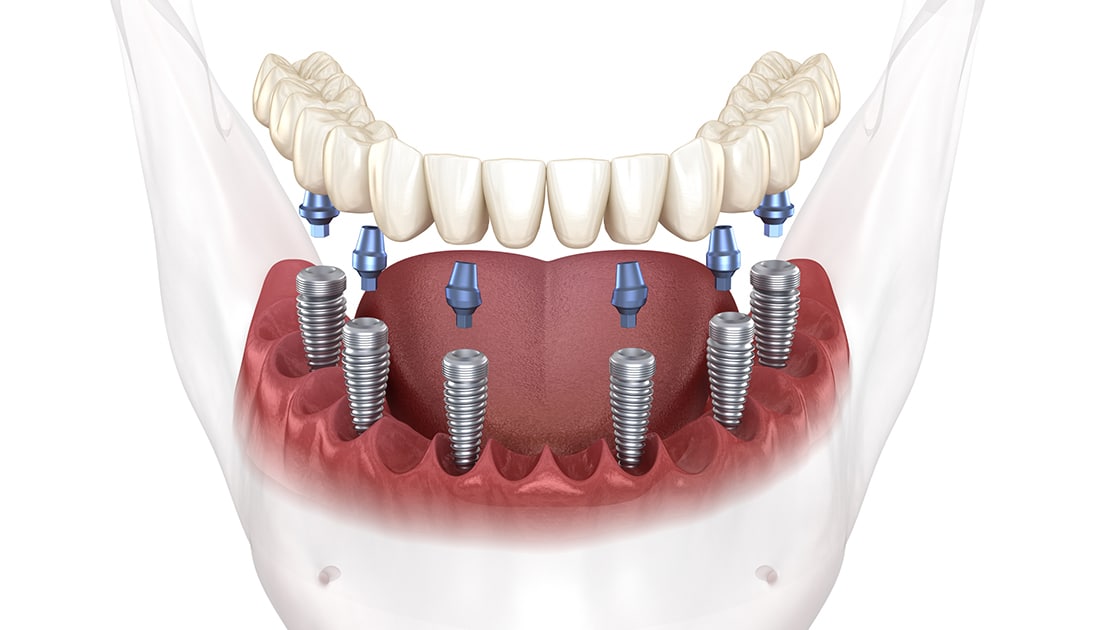
Denture Retentions
Also called implant supported dentures, 4-6 implants can be placed in the jaw to provide support for a full-arch denture.
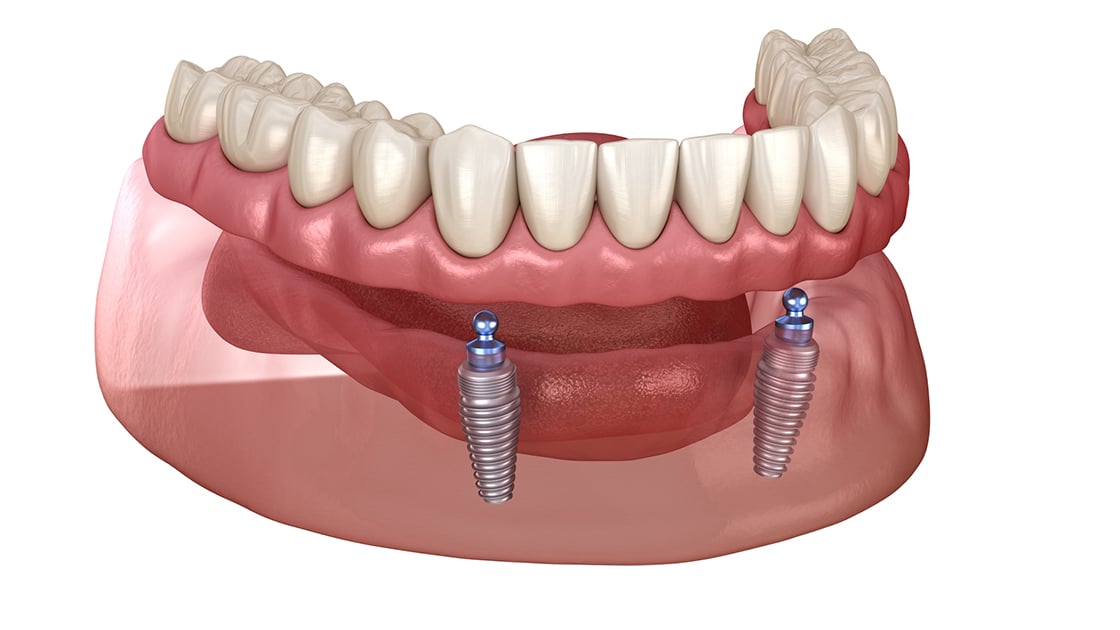
Implant Retained Dentures
Available for full or partial dentures, implant retained dentures require the placement of two or more dental implants to secure the dentures in the mouth. This type of denture will “snap” onto the implants and can be removed for cleaning at night.
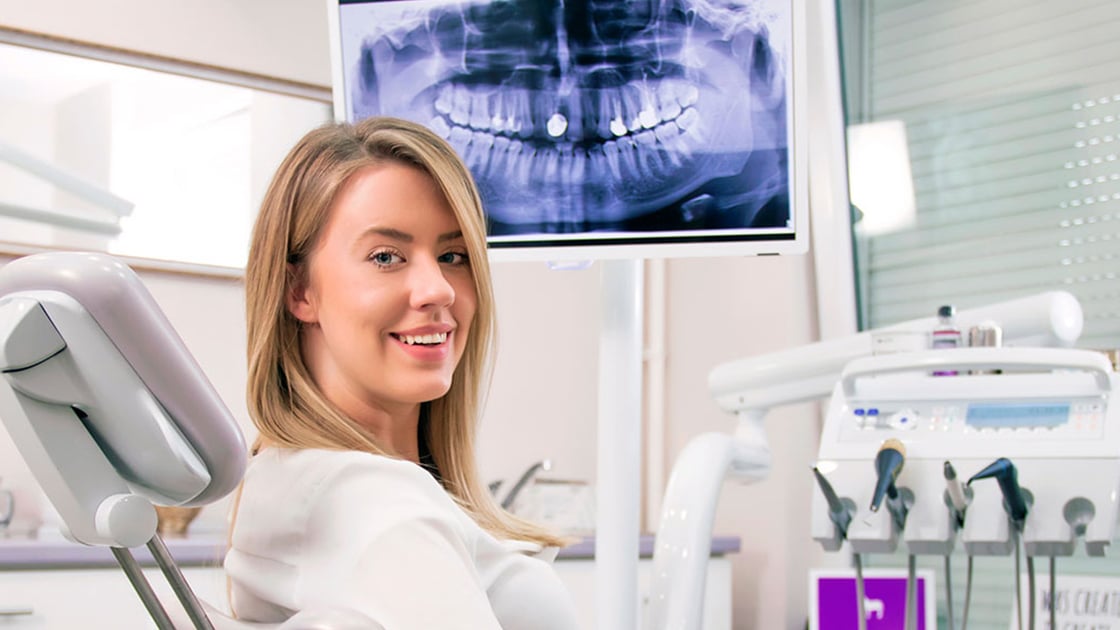
Guided Dental Implant Placement
3D technology allows our doctors to more accurately place dental implants using minimally invasive techniques that improve patient comfort and healing while maintaining the highest standard of treatment and restoring your smile.
The 3D digital guidance provided by this specialized software helps our team plan the implant placement procedure. It also allows the patient to visualize the implant’s future location and its support for the final restoration. Once planning is complete, our team uses this 3D-guided implant technology to create a customized surgical guide that provides greater precision and accuracy during implant placement.
Are You a Good Candidate for Implants?
If you have one or more missing, decayed, or damaged teeth, you may be a good candidate for dental implants. The biggest factor in eligibility for dental implants is the condition of your jaw where the dental implants need to be placed. If your teeth have been missing for a while, either months or years, the support structure for those teeth may have resorbed, or dissolved. The degree of resorption may mean your jaw can’t support dental implants.
This doesn’t mean you can never have dental implants, it simply means you may need some preparation first. A bone graft procedure can thicken and regenerate bone tissue by placing a bone fragment in the socket. This method is often successful, making it possible for patients to get dental implants once the graft site has sufficiently healed.
Frequently Asked Questions About Dental Implants
Contact Us
Call 360-803-8003 to schedule an appointment.
